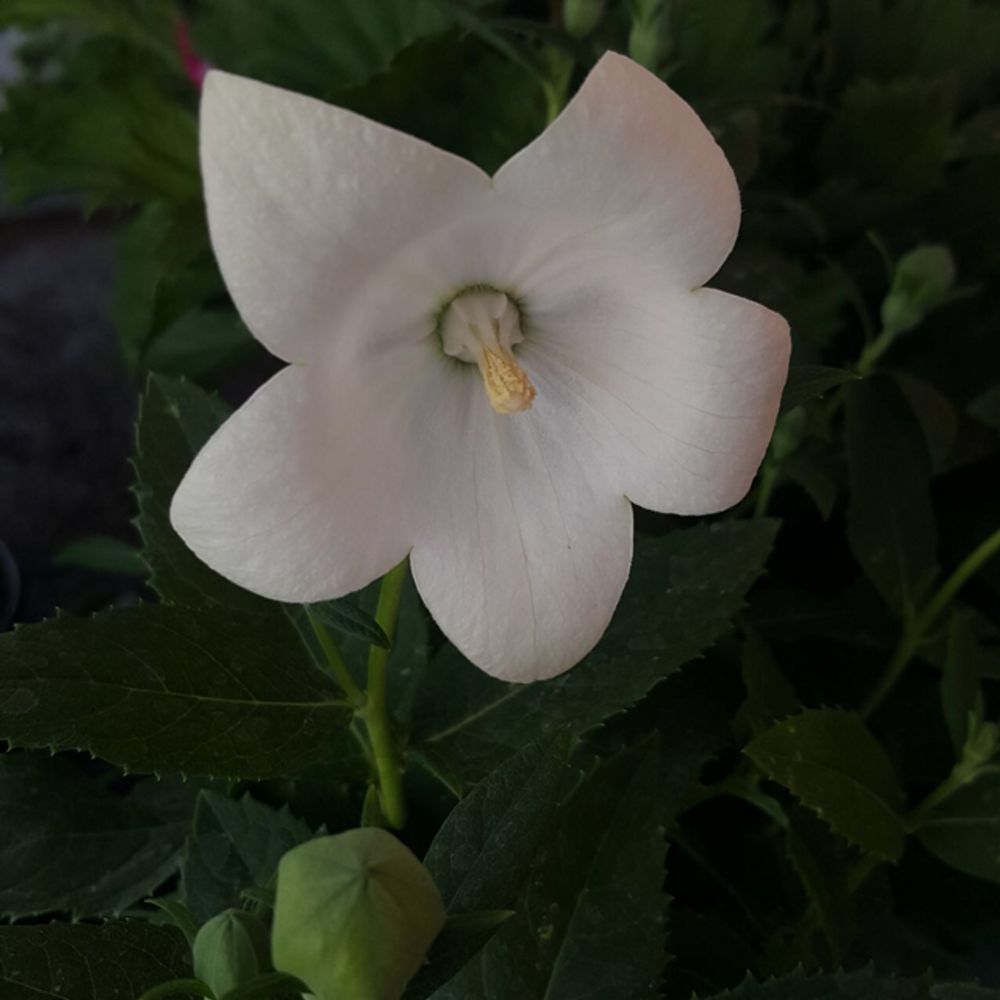Platycodon
(Platycodon)

Description
Platycodon is a genus of flowering plants in the family Campanulaceae, native to East Asia. It is commonly known as balloon flower due to the inflated shape of its flower buds before they open. The plant is popularly cultivated for its attractive bell-shaped flowers, which bloom in shades of blue, white, and pink. Platycodon is a hardy perennial plant that can thrive in a wide range of soil and weather conditions. In this article, we will explore the different aspects of Platycodon plants, including their taxonomy, morphology, cultivation, and uses. Taxonomy Platycodon belongs to the family Campanulaceae, which includes about 90 genera and 2,500 species of flowering plants. The genus Platycodon comprises three species: Platycodon grandiflorus, Platycodon grandiflorus var. albus, and Platycodon grandiflorus var. mariesii. The species are distinguished by their flower color and growth habit. Platycodon grandiflorus is the most commonly cultivated species, and it is often referred to as simply Platycodon. Morphology Platycodon plants are herbaceous perennials that can reach a height of up to three feet (90 cm) and a spread of up to two feet (60 cm). They have a thick, fleshy root system and a branching stem with alternate, lance-shaped leaves that are up to six inches (15 cm) long. The leaves are dark green, glossy, and slightly toothed at the margins. The flowers of Platycodon plants are borne on upright stems that emerge from the leaf axils. The buds are initially inflated, hence the common name balloon flower. The buds gradually open to reveal bell-shaped flowers with five petals fused at the base to form a tube. The flowers are typically blue or purple, but white and pink cultivars are also available. The flowers have a diameter of up to three inches (8 cm) and a conspicuous central pistil surrounded by five stamens. Platycodon plants bloom from midsummer to early fall. Cultivation Platycodon plants are easy to grow and care for, making them ideal for beginners and experienced gardeners alike. They prefer a well-drained soil that is rich in organic matter, with a pH between 6.0 and 7.5. They can tolerate a range of soil types, including clay, sand, and loam. Platycodon plants thrive in full sun to partial shade. They require at least six hours of direct sunlight per day to produce abundant flowers. However, they can also grow in partial shade, especially in hot climates where full sun may be too intense. Platycodon plants are hardy to USDA zones 3-9, which means they can withstand temperatures as low as -40°F (-40°C). Platycodon plants should be watered regularly to keep the soil moist but not waterlogged. Overwatering can lead to root rot and other fungal diseases. Fertilizer can be applied in early spring and midsummer to promote growth and flowering. Deadheading spent flowers can encourage the plant to produce more blooms. Platycodon plants are relatively pest and disease-resistant. However, they may be susceptible to slugs, snails, and aphids. These pests can be controlled by handpicking or using insecticidal soap or neem oil. Uses Platycodon plants have a variety of uses, including: Ornamental: Platycodon plants are commonly grown for their ornamental value. Their attractive, bell-shaped flowers in shades of blue, white, and pink make them a popular choice for borders, rock gardens, and container plantings. Cut Flowers: Platycodon flowers have a long vase life, which makes them a favorite of florists. They can be used to create beautiful floral arrangements and bouquets. Medicinal: Platycodon roots have been used in traditional Chinese medicine for centuries to treat a variety of ailments, including respiratory and digestive disorders. The root contains saponins, which are believed to have anti-inflammatory and anti-cancer properties. Culinary: Platycodon roots can also be eaten as a vegetable. In Korea, they are known as doraji and are commonly used in soups, stir-fries, and salads. Insect Repellent: Platycodon plants contain compounds that have insecticidal properties, which can be used to repel insects and pests from gardens and crops. Overall, Platycodon plants are versatile and have many uses beyond their ornamental value. Whether you are looking to add some color to your garden, create beautiful floral arrangements, or explore the medicinal and culinary benefits of this plant, Platycodon is a great choice.
Taxonomic tree:







